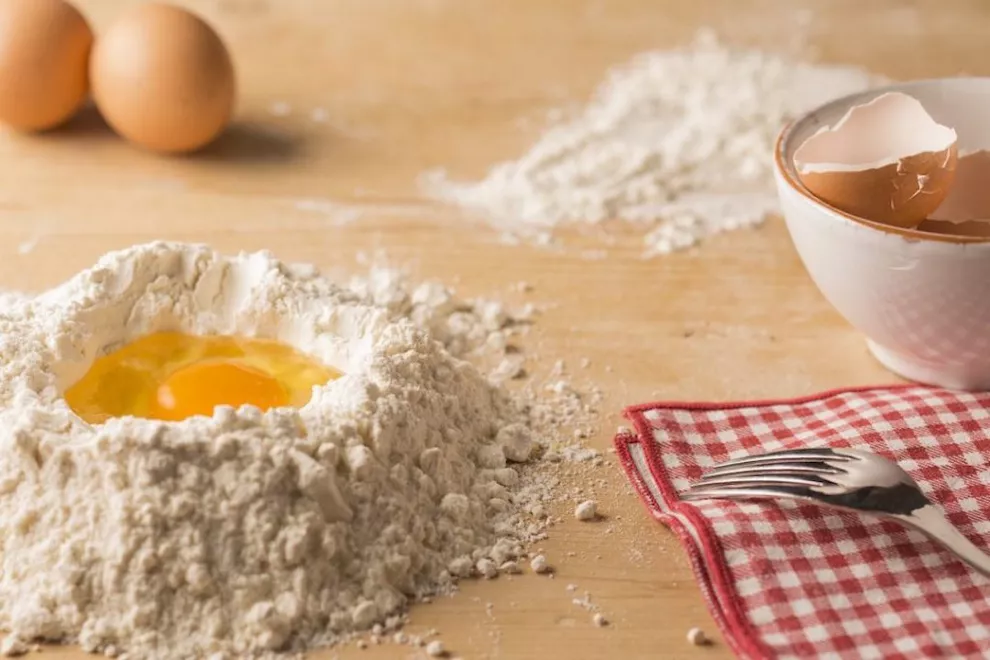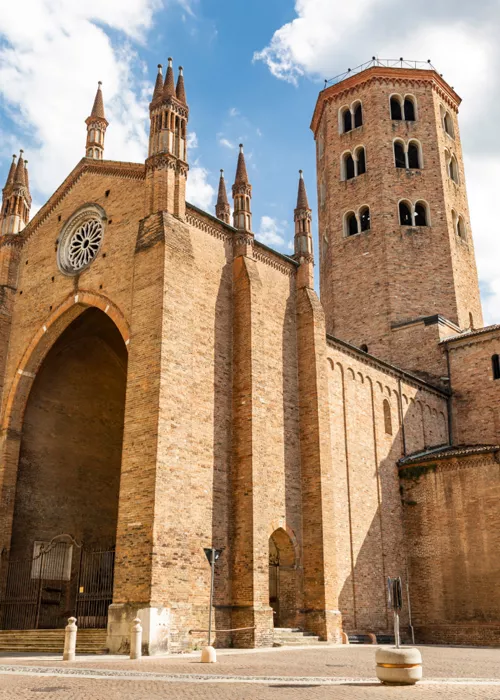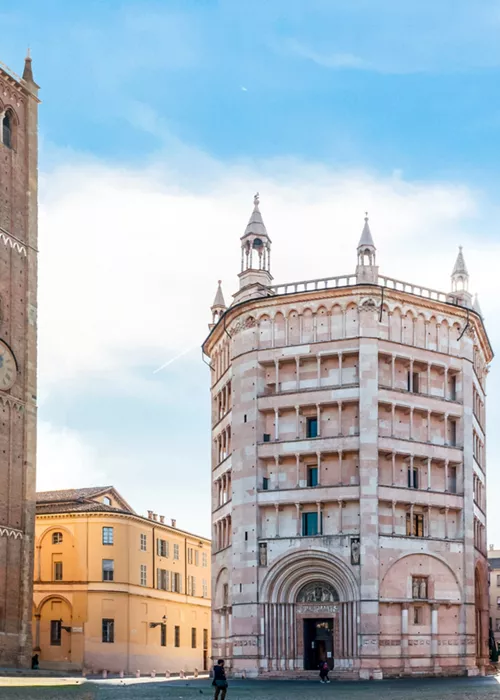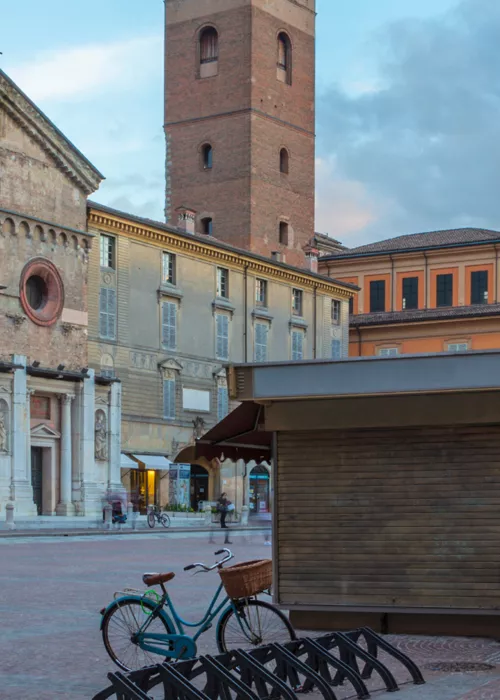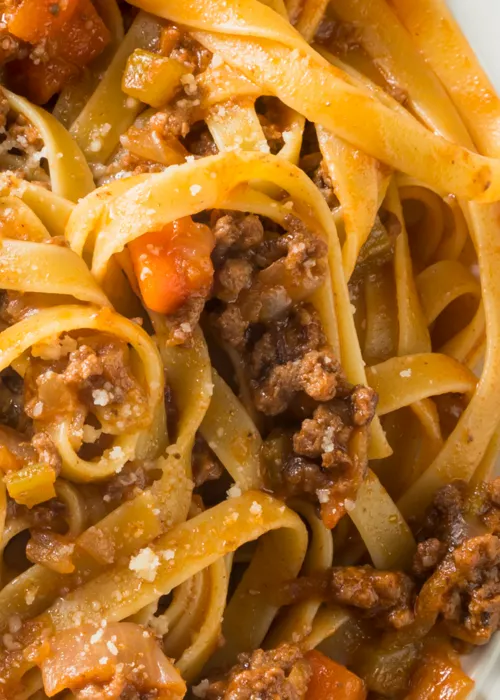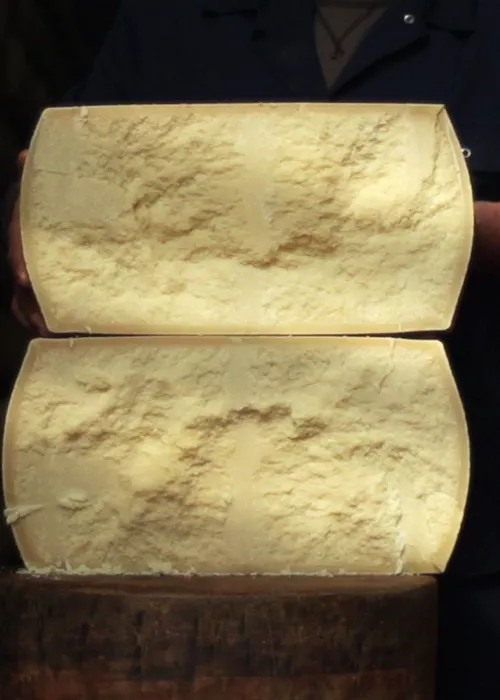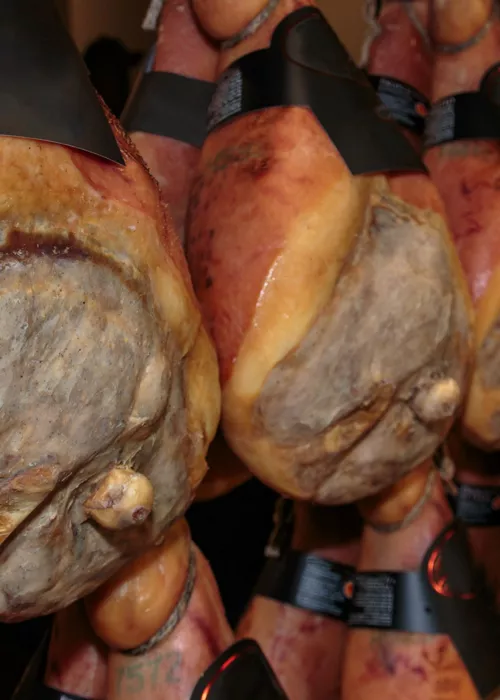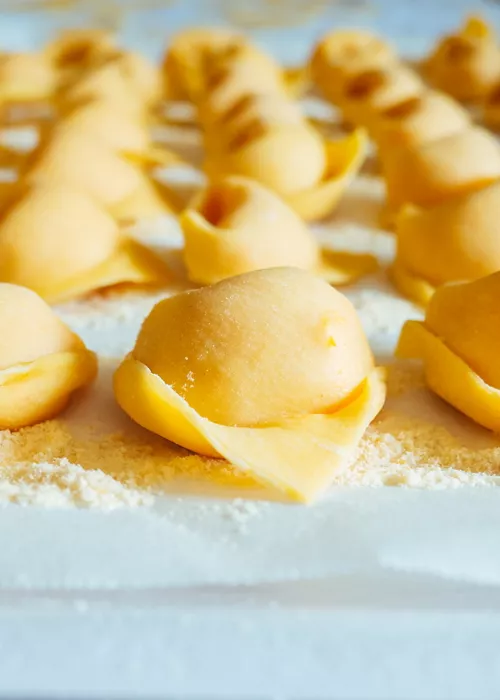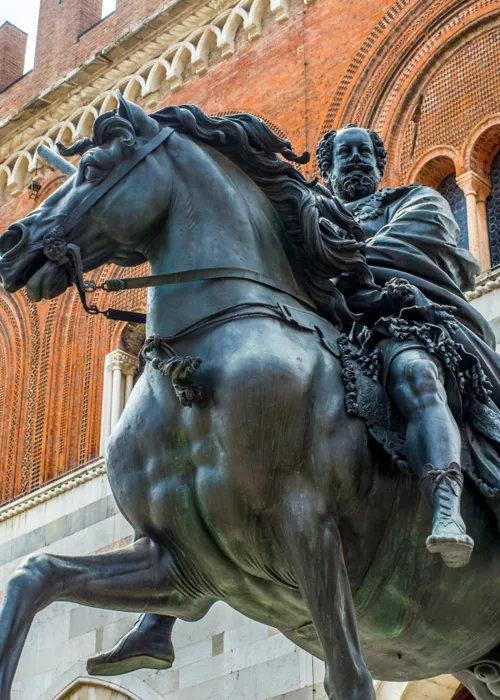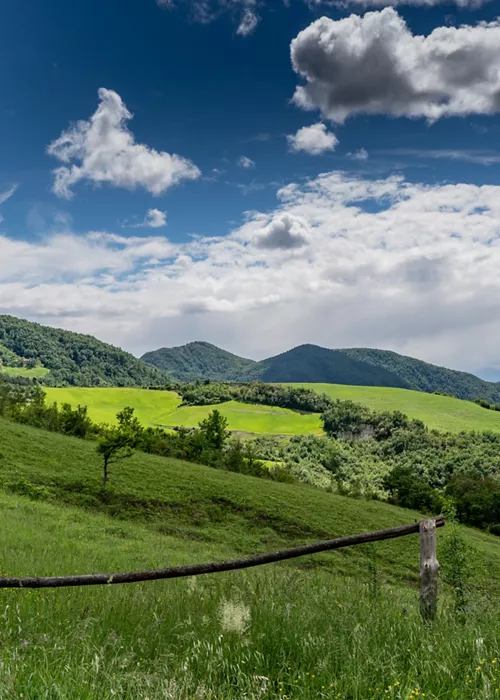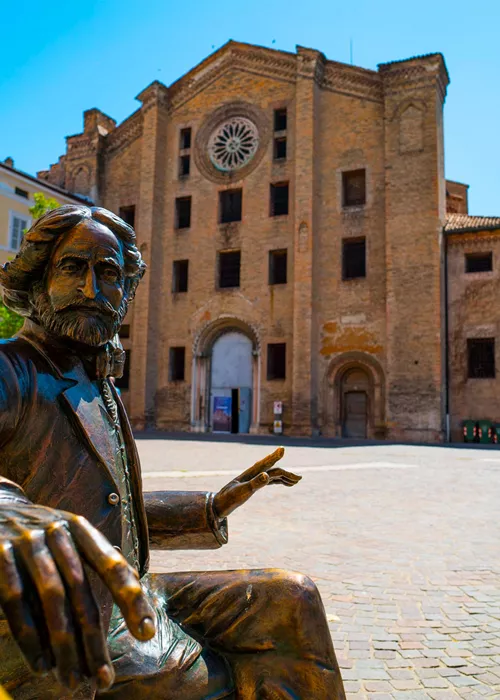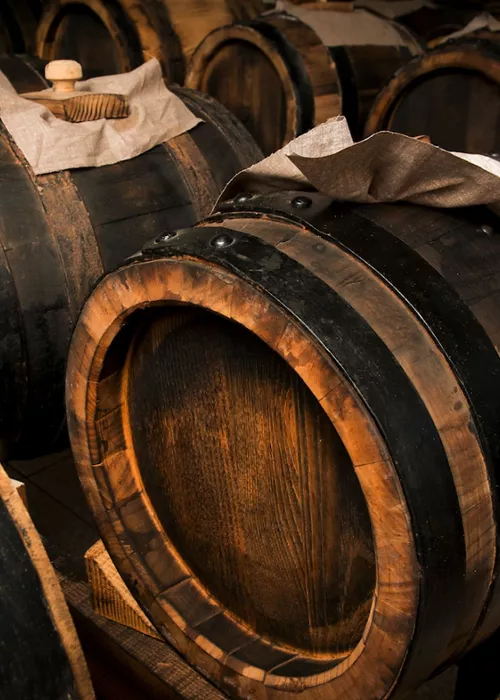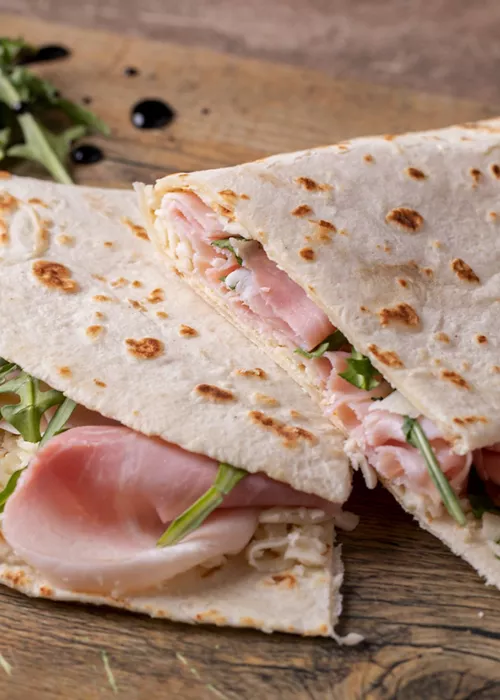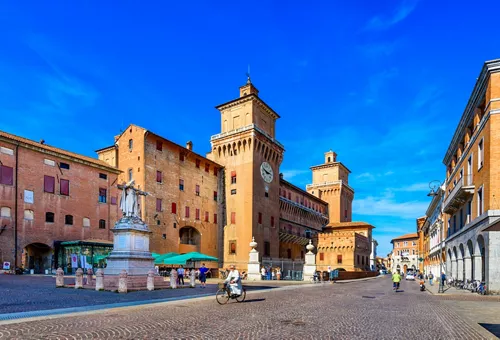Emilia Romagna: a journey to discover tortelli
3 minutes
Be they tortelli, anolini or cappelletti, ravioli are the triumph of Emilian tradition.
The itinerary we suggest will let you discover three traditional recipes with an unmistakable flavour: three dishes rooted in ancient popular cuisine.
Piacenza: tortelli con la coda
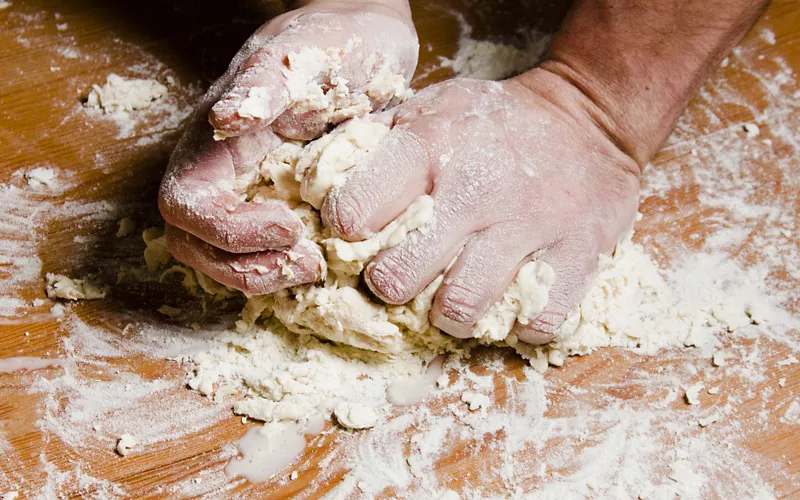
Let's start with tortello con la coda, typical of the Piacenza area.
This dish boasts an illustrious personality among its first tasters: Francesco Petrarca. It is said, in fact, that the recipe was invented as far back as 1351, when the cooks of Vigolzone castle prepared some stuffed pasta dumplings and offered them to the poet, who was visiting there.
Known in Piacenza dialect as “turtei cu la cua”, they are so called because of their shape: pasta stuffed with ricotta, spinach or herbs and grated cheese, closed like a candy or, more precisely, like a braid.
Try them plain, dressed with melted butter, parmesan cheese and sage. Or dip them, if you prefer, in a bowl of mushroom sauce.
Above all, do not miss the variant of anvein, the anolini from Piacenza, which differ in their filling: beef stew. A dish rigorously cooked in third broth and served in all seasons. We recommend, however, that you savour it in December, as it goes perfectly with the magical atmosphere of Christmas.
Parma: the anolini
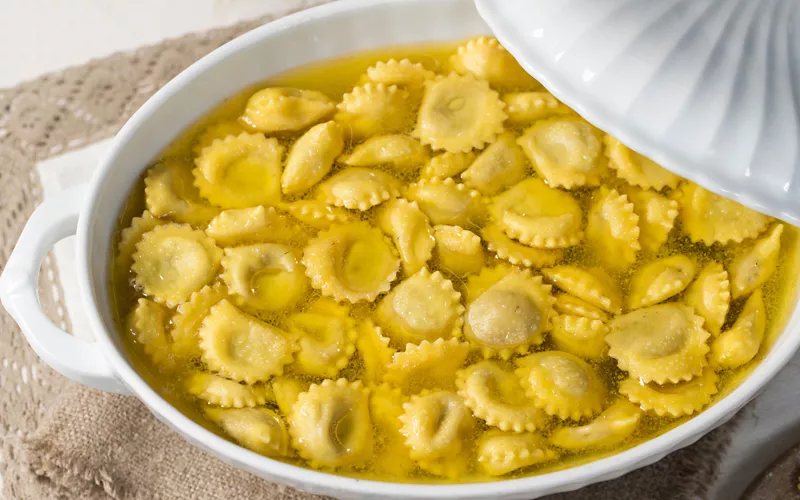
The second stop on the Tortello tour is in Parma. Here you will come across anolini, a symbol of the territory.
Also known as cappelletti, not to be confused, however, with those from Reggio Emilia, they have the traditional shape of a disc with smooth or jagged edges, very similar to a small sun.
They first appeared in the 15th century, and their immediate status as a typical dish of popular tradition meant that anolini were fully included in the most important Italian recipe book, compiled by Pellegrino Artusi around the end of the 19th century.
Try them in both versions, the “peasant” stuffing, made with Parmesan cheese and breadcrumbs, blanched in broth, and the “rich” stuffing, with the addition of meat stew.
In addition to the two traditional fillings, remember that the Parma tortelli have several variations. We suggest you try them all, from pasta stuffed with herbs dipped in butter and dried with cheese, to pasta with pumpkin, served especially in the autumn period, to pasta with potatoes, typical of the Apennines, served with mushroom sauce or truffles.
Reggio Emilia: green tortelli and cappelletti
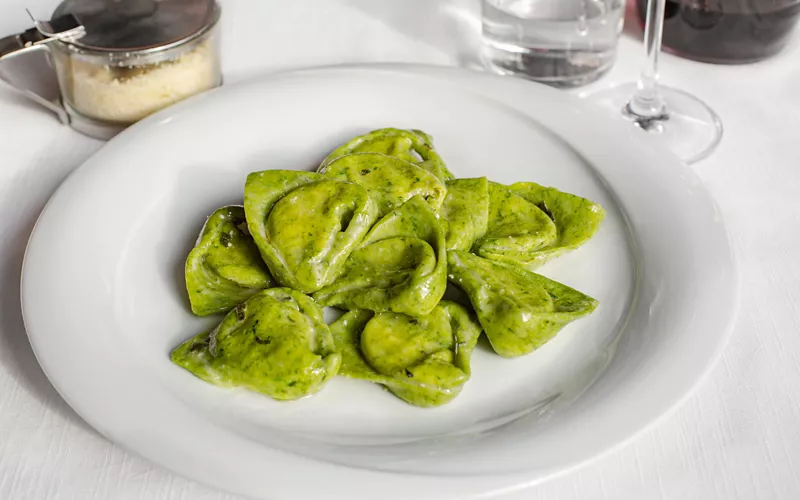
The last taste stop is in Reggio Emilia, home of tortelli verdi. The colour is due to the filling, similar to that of Piacenza and Parma, i.e. spinach and ricotta, but family and local traditions add chard, lard, garlic, parsley and nutmeg.
Typically square in shape, they are prepared with butter and the inevitable Parmigiano Reggiano cheese, necessarily seasoned, even better if extra-mature.
According to tradition, tortelli verdi are served at Christmas Eve dinner, and in Parma on St John's Eve, then in summer, on 24 June.
Don't forget cappelletti, of which the people of Reggio Emilia are particularly proud. Recipe and size vary according to family and location (mountains, Bassa reggiana and capital city). Perfect with broth, they do not disdain cream and meat sauce. Recipes are handed down from family to family and watching them will be like being mesmerised by so much beauty.

